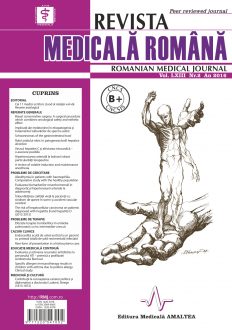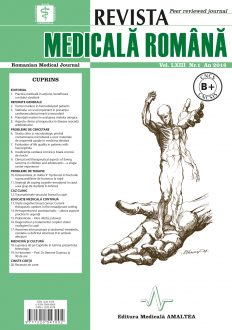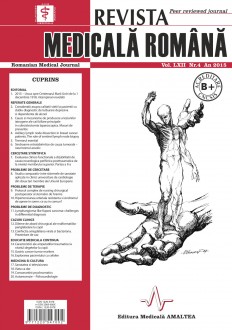SELECT ISSUE

Indexed

| |

|
|
|
| |
|
|
|

|
|
|
|
|
|
|
HIGHLIGHTS
National Awards “Science and Research”
NEW! RMJ has announced the annually National Award for "Science and Research" for the best scientific articles published throughout the year in the official journal.
Read the Recommendations for the Conduct, Reporting, Editing, and Publication of Scholarly work in Medical Journals.
The published medical research literature is a global public good. Medical journal editors have a social responsibility to promote global health by publishing, whenever possible, research that furthers health worldwide.
Breast conservative surgery. A surgical procedure which combines oncological safety and esthetic effect
Nicolae BACALBASA, Olivia IONESCU and Irina BALESCU
ABSTRACT
In the last twenty years, the surgical treatment of breast cancer (BC) has known a substantial progress, evolving from radical mastectomy – a mutilating procedure commonly performed in until 1970s – to breast conservative surgery (BCS) which allows the removal of the entire breast parenchyma saving the skin envelope of the mammary gland, and sentinel lymph node biopsy that helped reducing the complication rate associated with radical axillary dissection. As it has been proved that BCS and radical mastectomy are associated with similar survival rates, BCS or “skin sparing mastectomy” is nowadays considered to be an oncologically safe procedure in locally advanced BC if the surgical resection criteria is respected: negative surgical margins of resection with an entire removal of all the malignant breast tissue and the maintain of aesthetic result. Moreover, owing to the development of novel oncoplastic techniques and the fact that performing BCS allows the preservation of the skin and sometimes the nipple-areola complex (NAC), BCS techniques such as the skin – sparing mastectomy and nipple-areola complex mastectomy are currently considered mainstay treatment of early stage BC without compromising the oncological safety of mastectomy.
Keywords: breast cancer, conservative mastectomy
Full text | PDF


